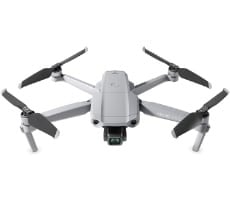We, like you, hate seeing bloatware on new computers. Thankfully, it appears Lenovo mostly agrees. The only third-party software we spotted on our ThinkPad X1 Yoga, outside of the usual Windows 10 fluff, was
McAfee antivirus. Thankfully McAfee is easily removed these days, if desired, to be paved over with your AV solution of choice.
First party programs are another matter. Lenovo provides several utilities to cover a breadth of needs. We won't dive into everything here but will touch on the more pertinent and useful applications.
First up, we have the Lenovo Companion app. It's primary purpose is to offer one touch optimization of your ThinkPad. Within its menus you can check up on system health, search for updates, check warranty status, or even contact support if you need a hand. The support section also houses articles for novice users to get more familiar with the ThinkPad's functions or even help old pros learn a few tricks. To make cleanup more convenient, Lenovo provides a shortcut to the optimizer right next to the system tray.
Lenovo also provides its own app for settings. The Lenovo Settings mirrors many of the regular Windows settings such as screen brightness or network connections. Lenovo takes their settings a step further, however, by adding in functionality such as adaptive display brightness, intelligent cooling profiles, audio enhancements, touchpad functions, and more. One feature we particularly like seeing is the Paper Display. This option adjusts the color temperature rather significantly to improve the reading experiences in any light. Blue light especially can be very stimulating, so filtering blues out with this option can help combat insomnia incurred by late night computing.
Finally for software, we want to cover the WriteIt app. Once configured, the WriteIt app can automatically detect text inputs on any screen or program and allow you to use the ThinkPad Pen Pro for entry. It can also summon a full screen overlay where you can take and save notes as overlays on top of whatever is on the screen. It works somewhat like Microsoft's Edge Browser's markup feature, minus the limitations of only working in the web browser. IT professionals especially may love using this feature to create quick and clear instructions to send to their clients during troubleshooting sessions. The text recognition works admirably. It is even able to decipher the worst of our chicken scratch with little issue and the palm rejection works well enough to comfortably rest your hand on the screen as you write. That said, there is still just a touch of lag between moving the pen and seeing a line appear despite Intel's Skylake and its improved frequency ramp up courtesy of
SpeedShift.

Lenovo Writelt AppUser Experience
Let's take a step back now to discuss what using the ThinkPad X1 Yoga is actually like. First, we need to make some important distinctions to set our expectations. Yes, the X1 Yoga is thin and light. However, the low profile performs a bit of an illusion, making the 14 inch frame feel closer to a 15 inch notebook in size. The proportions can make the notebook feel a touch unwieldy, like a notebook on a diet rather than a true ultraportable. We actually appreciate the roomy feeling we get while using this laptop, especially when typing. The keyboard is outstanding with the sole exception of Lenovo's decision to place the Fn key where the Ctrl key should be, but we suppose that is a personal gripe more than anything. Keys are virtually silent when pressed yet provide clear tactile feedback.
Everything the keyboard does right, however, the trackpad gets wrong. Well, almost everything. The glass surface feels nice. The problem is the trackpad has an acceleration issue. If you move your finger across the pad and hold position, the cursor is just as likely to keep moving. Fine adjustments are equally problematic and we found it can take a couple passes to land in the desired spot. It can be significantly more convenient and accurate just to reach up and touch the display when needed.
Unfortunately, the size hampers the key draw of a 2-in-1: tablet mode. There's no getting around the fact that carrying around a 14" slate is awkward. You will likely not to hold this device one handed for more than a few minutes before wanting to set it down. Instead, the tablet mode will most likely be used on a desk or a lap for support. The ThinkPad Pen Pro does shine, though, when it is necessary to tote around. You can cradle the X1 Yoga across one arm like a clipboard and rely on handwriting recognition for input. Artists, on the other hand, should appreciate the larger screen real estate. The Pen Pro's 2048 levels of pressure sensitivity responds accurately and predictably to varying strokes so you can draw with confidence -- artistic ability provided.
Acoustics
Audiophiles, this is not your notebook but then again most notebook audio solutions don't cut it for sensitive ears. The stereo speakers are mounted on the bottom of the laptop and essentially rely upon having a surface to reverberate off of to be heard. The dynamic range is heavily skewed towards trebles, with some of classic rock's greatest baselines barely making an appearance. The tone becomes especially tinny in tablet mode. It does, thankfully, get plenty loud at least. Using the built in Windows speaker test, the volume registered at 66dB in a 20dB ambient room.
In terms of cooling, the Lenovo ThinkPad X1 Yoga generally runs silently with the fans off but when they do kick in, while audible, they are still fairly quiet and register about 24dB in the same 20db ambient room.
Any gripes with its build are quickly forgotten when we look at performance though. This ThinkPad X1 Yoga means business and fought for the gold on every step of our benchmark suite...











